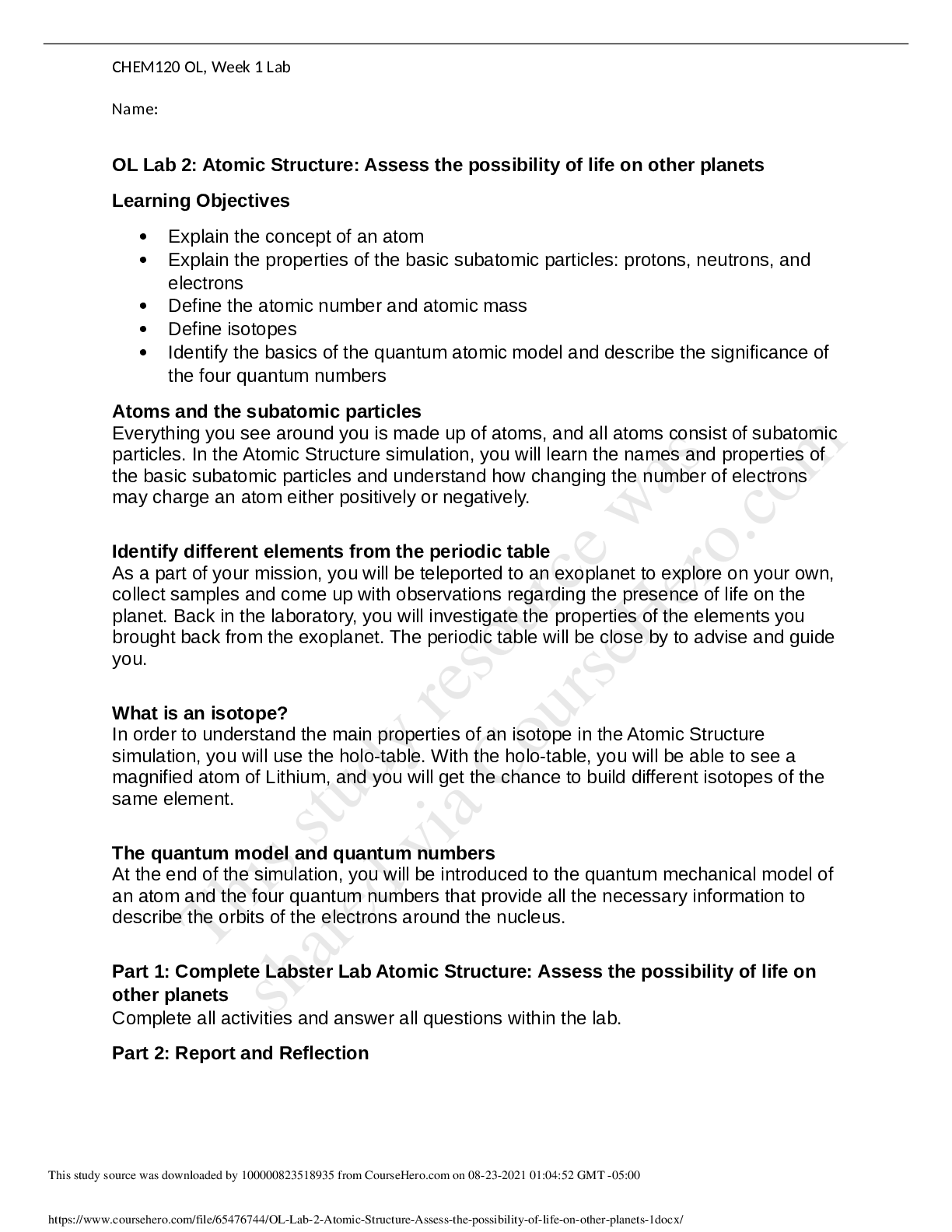Computer Science > Lab Report > Australian National UniversityCOMP 3310Tute2-3310-6331-2020-AnswerSheet-verified by experts (All)
Australian National UniversityCOMP 3310Tute2-3310-6331-2020-AnswerSheet-verified by experts
Document Content and Description Below
COMP3310/6331 – Tute/Lab #2 At this stage students will have (also) covered: • LAN principles, Ethernet and Wifi • At this stage it is still too early to do coding exercises . Activity 1 In... troductions: • Still looking for a 3310 class-rep – nominations are being sought, see first lecture 2 Discussion of lectures: • To-date: Any comments on pace, content, style? • Planning ahead: Any particular real-world network systems, technologies, challenges, etc. that you’d like to have a guest lecture on (Weeks 10-12)? 3 Questions for reflection: 1. How is statistical multiplexing different to TDM/FDM/SDM/etc? a. It’s just “having a go” and seeing if you can get data through, within a fixed and communally-shared bandwidth. TDM/FDM/SDM are like a circuit, they guarantee an allocation of bandwidth, but they waste bandwidth when nobody is using their allocation. 2. Why do we use frame-flags to show the start/stop of a frame, rather than just the framelength? a. Way too easy to get out of sync, even just a single-bit error. Everything thereafter is garbled. Having regular start/stop indicators gives everyone a chance to recover, within a frame-length. 3. What’s the difference between Collision Avoidance and Collision Detection? a. CA is a collective behaviour, where everyone waits a random time before sending, to avoid everyone starting at the same time (very likely collision). CD is active individual behaviour, where you listen for collisions and stop, then back off. 4. How does RTS/CTS solve the Hidden Terminal Problem? Why does it need to include the length of the message (N bytes) as part of its information? a. Best shown over a diagram, from slide 24 (and earlier) of T3a. The CTS is seen by everyone in range of the target access point (the one that has received an RTS from somebody, and broadcasts the CTS). The CTS advises uninvolved devices from engaging in a conversation with it, so there are no collisions, and to wait until N bytes have passed before they try to send their message. 5. What’s 1000Base-T Ethernet? (how fast, what medium) a. 1000Mb/s (1Gb/s) over Twisted-Pairs (copper) 6. Why does Ethernet send a ‘heartbeat’ signal (“Normal Link Pulse”) when not sending data? a. To show it is there, newly connected or just quiet. This lets the device at the other end turn on its Link light. 7. Why do 802.3/802.11 frames start with a preamble? a. To wake up the receiver(s) and enable clock-sync to occur 8. Why do WiFi frames start with fixed-rate preambles and headers? [Show More]
Last updated: 2 years ago
Preview 1 out of 3 pages

Buy this document to get the full access instantly
Instant Download Access after purchase
Buy NowInstant download
We Accept:

Reviews( 0 )
$7.00
Can't find what you want? Try our AI powered Search
Document information
Connected school, study & course
About the document
Uploaded On
Jun 08, 2021
Number of pages
3
Written in
Additional information
This document has been written for:
Uploaded
Jun 08, 2021
Downloads
0
Views
151


 (1).png)
.png)










